By Connor Crinion and Anneke Karreman, Project Assistants, Seattle University Project on Family Homelessness
Note: Every year our student project assistants create a special event to support Housing and Homelessness Advocacy Day (HHAD) in Olympia, and every year there’s a special twist that reflects the creativity and energy of that team. So when more than 600 advocates from around the state filled the steps of the Legislative Building on Feb. 28, 2019, they saw something new and different: a special art installation created by our project assistants, Anneke and Connor. They reflect on what they’ll take away from this whole experience, which started last fall with the eviction reform fact sheets they created for WLIHA.
What were your expectations before HHAD, and what’s your perspective now after participating?
Anneke: What I thought about HHAD before I got there was chanting on the steps and meeting with legislators about housing and homelessness advocacy, but in reality it turned out to be much more. It was a bonding experience in that everyone was there for the same thing, but with different levels of experience and different lived experiences. It didn’t matter if you had gone before or not; everyone was welcome.

Connor: In some ways, HHAD was similar to the expectations that I had, and in other ways it was quite different. Meeting with legislators and legislative aides felt familiar, as I’ve done that in the past at various lobby days that I’ve attended. However, HHAD also provided a sense of community that I’ve never felt before while engaged in advocacy—meeting advocates and activists throughout the day felt like being welcomed into a broad community. Whether the connection was fleeting, or something that may last more long-term, it felt powerful to connect with others based on our shared values.

What was the postcard project, what was your role, and why did you decide to do it?

Anneke: This project was designed to educate and engage the community at Seattle University to advocate for different policies regarding student homelessness, eviction reform, and affordable housing in Washington state. To expand on the successful advocacy postcard project that Katie, Madison and Tess did last year, we thought up a way for the postcards to be displayed in a way that also alluded to the spirit of support for those who experience housing instability and loss. We decided on a “house”-like structure to symbolize the intrinsic importance of the home and the foundation it provides for a person’s success and well being.
The postcards I designed utilize the human symbol of the hand and connect it to the home through its combination with household belongings.
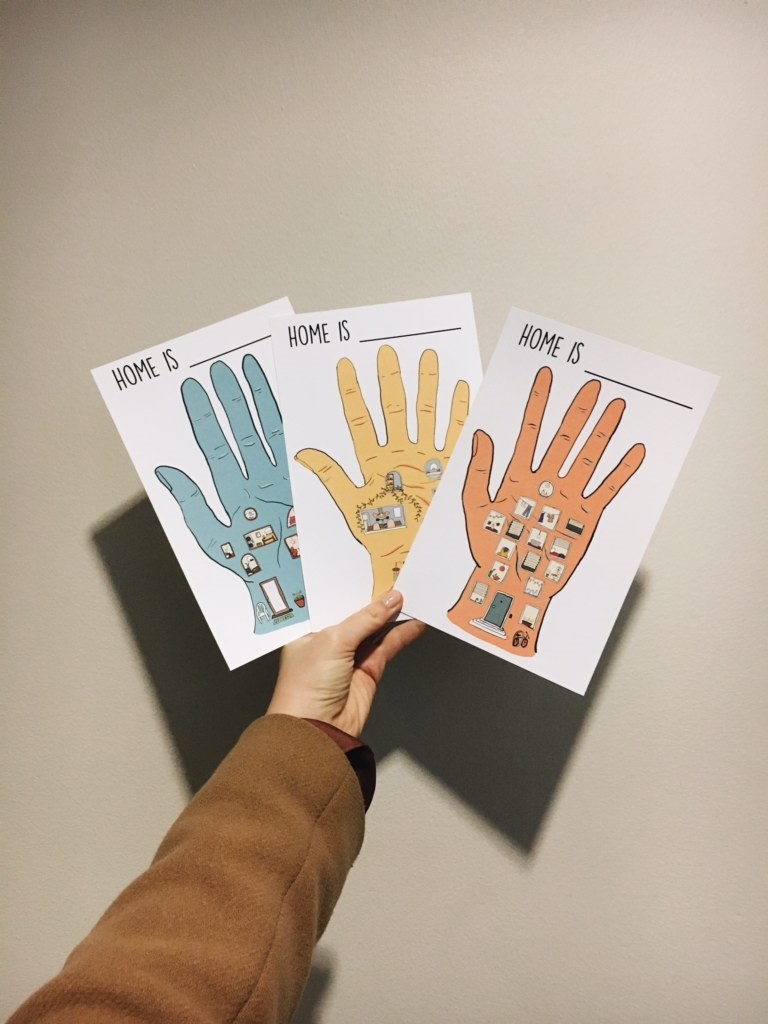
Connor: My contributions to the display structure and postcard project mainly related to writing the copy for the postcards, legislative research, and handling some of the logistics related to placing the structure on the Capitol campus in Olympia. To help in writing the copy, I was able to draw in knowledge from classes and past work experiences to better inform how we discussed and framed issues of eviction, affordable housing, cost burden for renters, and the challenges faced by students experiencing homelessness.
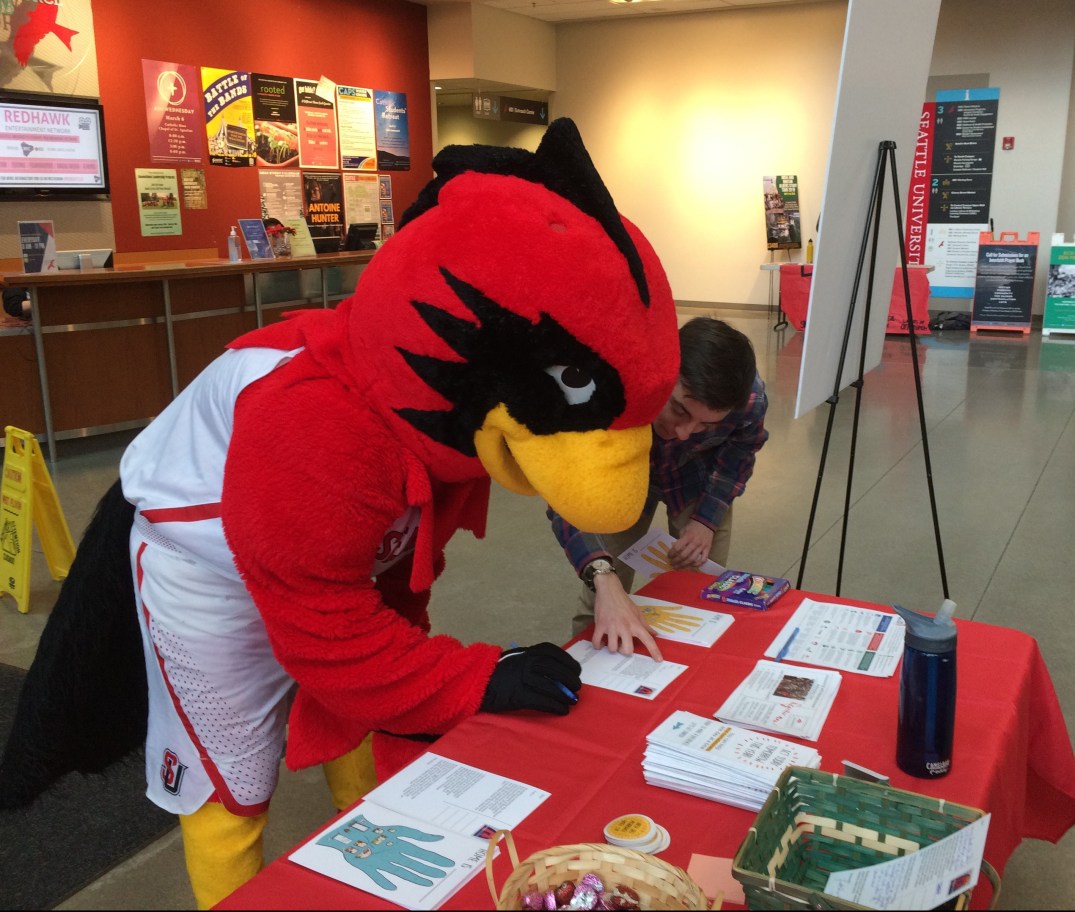
I am grateful that collecting the advocacy postcards – nearly 200 — provided us with the opportunity to engage the Seattle University community in critical discussion about the tremendous need for housing in our city and state. For me, deciding to display the postcards allowed us to connect our community to the larger statewide movement for housing justice. Even though only Anneke and I were the only SU students to travel down to Olympia, our display was a reminder that we were joined in spirit by many remote advocates, both those from SU and others.

What’s one moment or memory that stands out to you from the day?

Anneke: One of the most compelling parts of HHAD to me was the drumming and prayer led from indigenous members from Chief Seattle Club. A woman from the Lakota tribe led the prayer which she spoke in both her first indigenous language, then in English. Sage was burned during this time and the rich smoke wafted from the parking lot up to the steps. There was something truly special about that moment, to hear the expression of an ancient and endangered language by a native leader. Her speech was also followed by a drumming session by members of the club.

The rhythmic beat of the drum connected everyone there in that moment and made me think about how we all stood on indigenous land of the Duwamish tribe. It was also mentioned how Native Americans have been the top demographic to experience homelessness. In truth, it started a long time ago during the time of Westernization and assimilation and natives were forced from their home spaces.
Connor: One aspect that struck me was the scale and the collective urgency that I felt while participating. Gathering on the steps of the Legislative Building in Olympia with hundreds of other advocates was a moment that reminded me of the stakes of the day, and the potential impact that our advocacy could have on the lives of thousands of Washingtonians.
As WLIHA staff and other HHAD participants led chants with the 600-strong crowd gathered on the steps, I almost felt like I could feel the possibility of a world with more just eviction laws, more affordable housing, and fewer students experiencing homelessness. While obviously our chanting alone did not get us there, I believe the collective power that it represented will help us get a bit closer to that world.
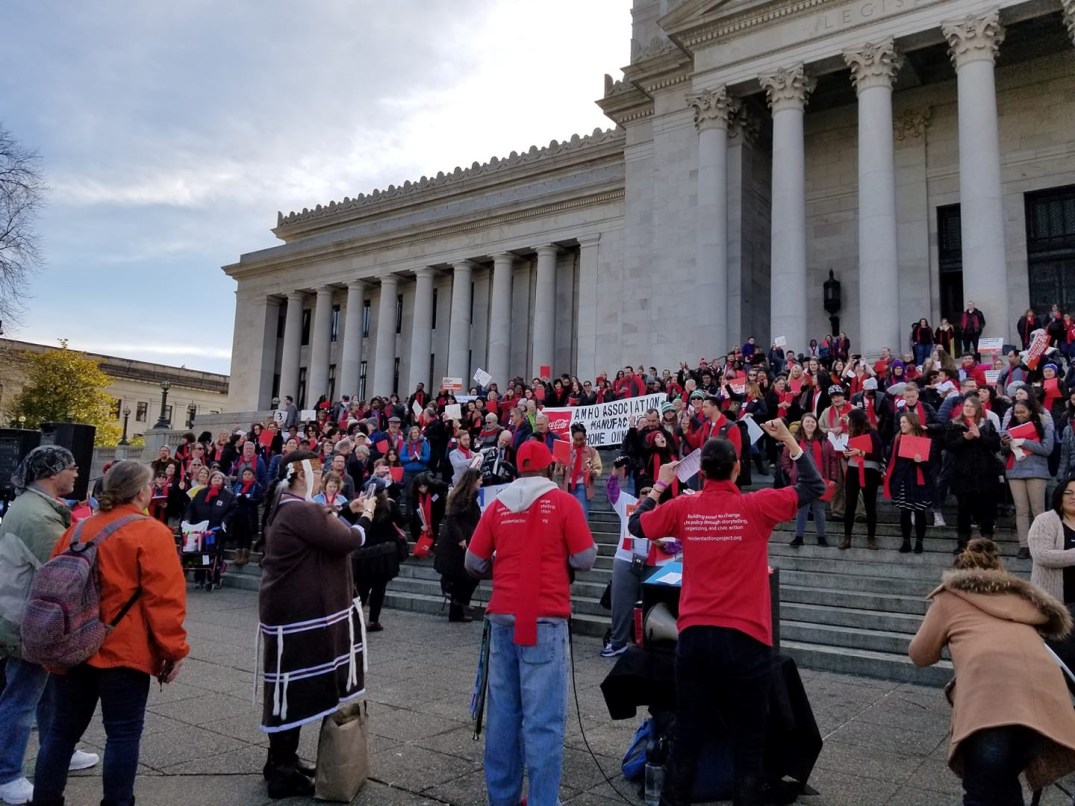
What are you most proud of from your experience at HHAD?
Anneke: I am most proud of the potential ways in which this project inspired people at HHAD, at Seattle University, and lawmakers to have conversations about housing affordability, eviction reform, and student homelessness. I really hope that lawmakers will read each postcard thoroughly.
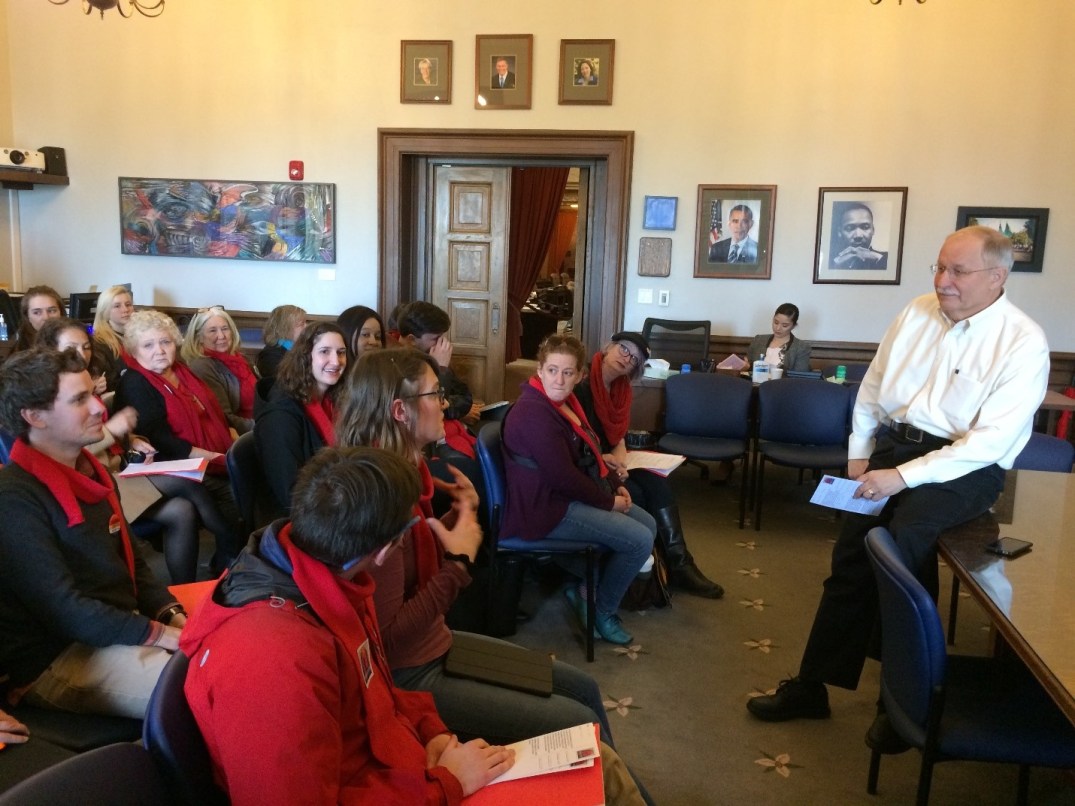
Possibly, the postcards will influence some of the outcome of some law decisions around housing and eviction reform.
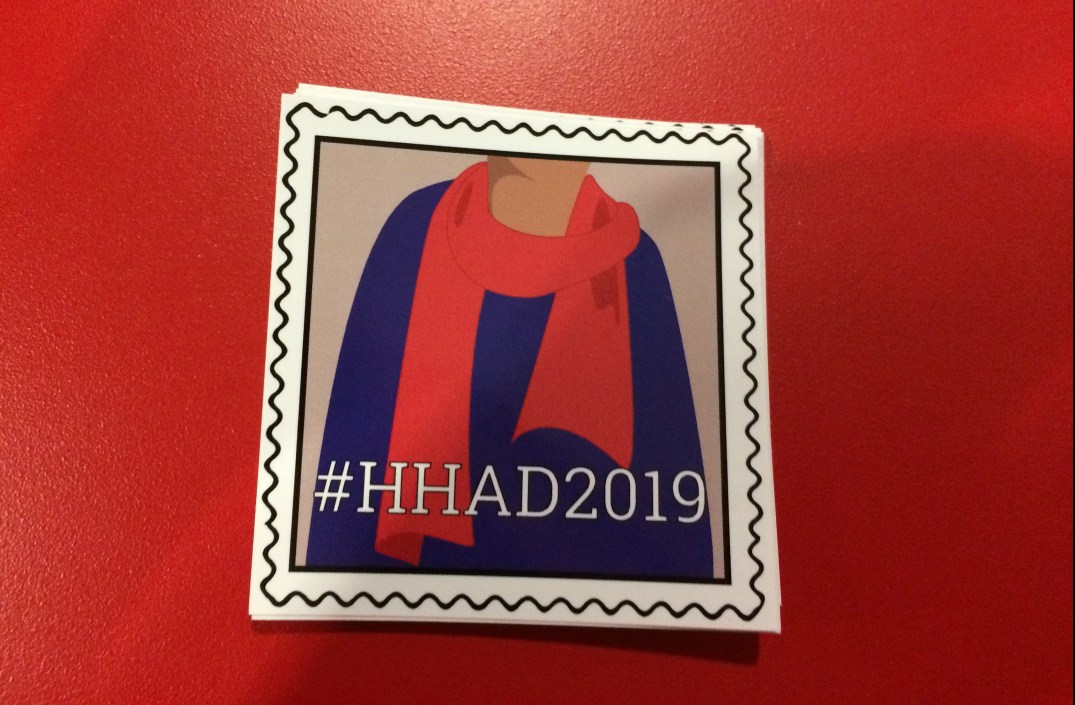
I am also proud of our team of three that enabled this installation to happen. It was a crazy idea to start out, which seemed unattainable at times, but all of our meetings discussing logistics and content paid off. I am honored that I could bring local Seattle voices to the Capitol and support those who need it the most through public art. As a team of only two project assistants, I am very proud of the way Connor and I brought our strengths to the table for this project.

The video below, by Prof. Chordiya, shows a close-up of some of the postcard messages.
Connor: There’s a lot to be proud of. First and foremost, I think Anneke and her dad, Frank, deserve recognition and appreciation for the hard work that they put into creating the structure. Without them, displaying the postcards would not have been possible.
I am also proud of our entire team for the way that we collaborated to get the project done. From Catherine helping us through brainstorming and anticipating challenges, to the way Anneke and I collaborated to integrate the written messaging with the vision for the design of the hand, I think our collaboration and flexibility made this project possible.

Lastly, a short thank you from Anneke and Connor:
In recognition that this project was a collaborative effort, we would like to conclude by thanking many of the people that helped make it possible. Many thanks to the Washington Low Income Housing Alliance for organizing this day, as well as Seattle University’s Facilities Team for their assistance in getting this project down to Olympia.

In particular, thank you to Dimitri Groce of WLIHA for all his support and encouragement throughout the process.
Thank you to our Project Supervisor Catherine for supporting us in every way throughout this project. Thank you Prof. Rashmi Chordiya for your positive presence and technical support at Olympia during the event.

We’d also like to thank Kristina Sawyckyj, the 43rd District legislative lead (and SU student), for her support in our meeting with Speaker Chopp.
Thank you also to Frank Karreman; you made the “house” design come to life.
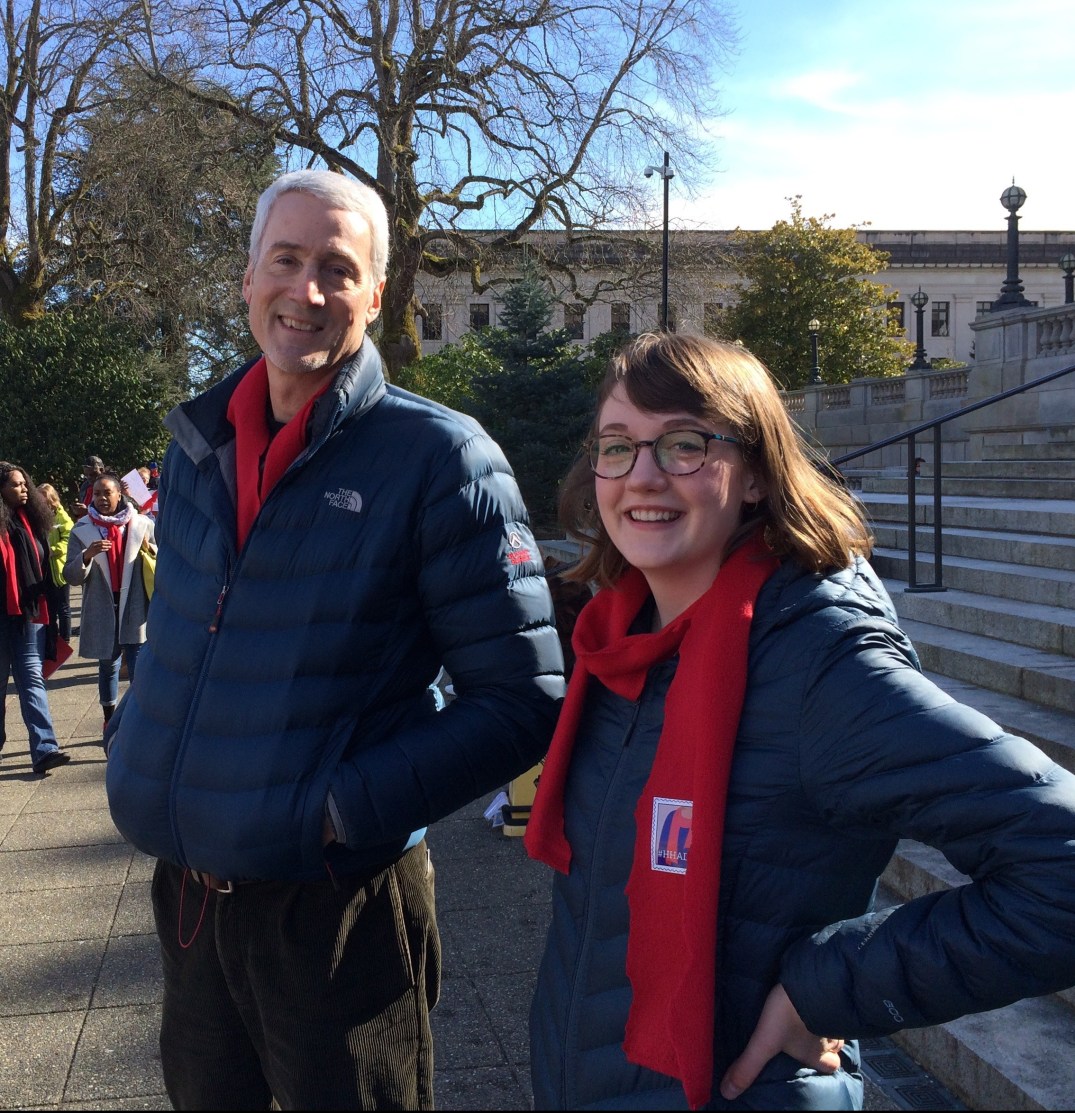
Finally, we are grateful to all the Seattle University students, faculty, staff, and community members who took the time to write a postcard — thank you for adding your voice to a statewide movement.
All photos by Catherine Hinrichsen unless otherwise noted.
